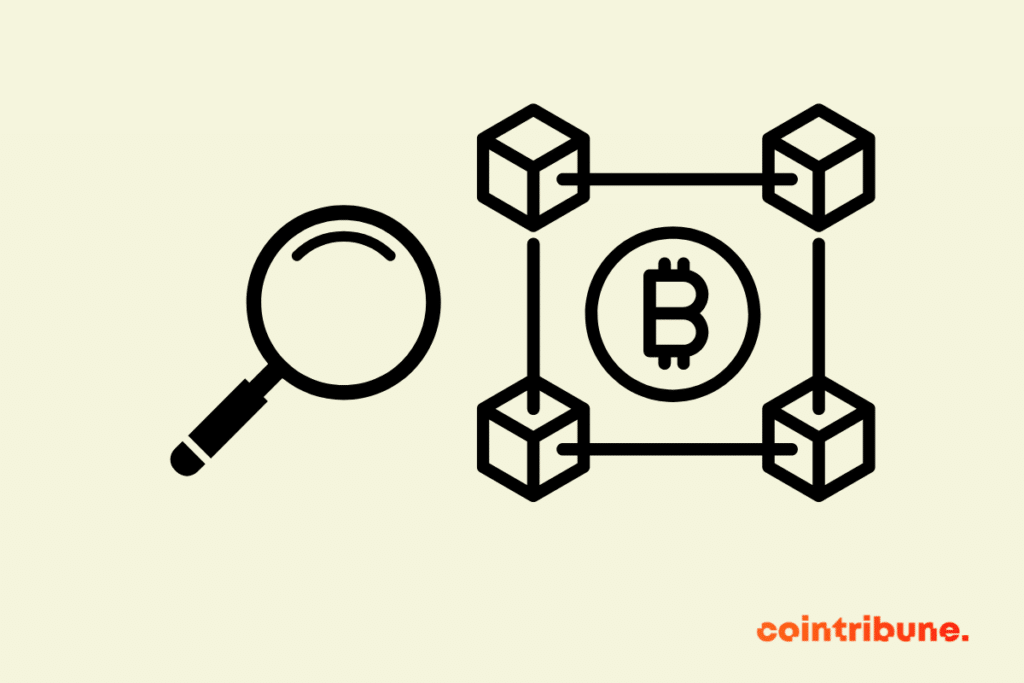Bitcoin Security Audit: A Step-by-Step Guide
In the current context marked by a significant increase in cyberattacks and fraud, the integrity of digital assets has become an undeniable priority. To address this concern, the Bitcoin security audit emerges as a solid and effective tool. This article aims to dive into the heart of this approach, specific to the first created blockchain, in order to understand its importance and the process of its implementation, while integrating relevant Bitcoin security tips.

What is a Bitcoin security audit?
A security audit or control or evaluation of Bitcoin is a process of examining and analyzing the systems and protocols related to the first distributed ledgers to identify potential vulnerabilities and propose corrective measures. It is an essential means for companies and individuals to protect their digital assets and ensure the safety of their transactions. It requires technical expertise and a thorough understanding of blockchain technologies and cryptocurrencies.
Why is a Bitcoin security audit necessary?
The necessity of a security audit arises from several factors. First, the decentralized nature of Satoshi Nakamoto’s protocol and other cryptos like Ethereum means that the responsibility for their custody lies with individual users. Unlike traditional financial systems where financial institutions provide various measures and guarantee users’ funds, in the crypto world, users are responsible for protecting their own funds.
Secondly, the threat landscape in the field of crypto assets is constantly evolving. Hackers are constantly developing new techniques to exploit vulnerabilities in systems and protocols related to the flagship blockchain. A Bitcoin security audit can help identify these vulnerabilities and implement measures to mitigate them.
Finally, a Bitcoin security audit can help establish trust. For projects using the first of the blockchains, conducting a security audit can demonstrate to their clients and partners that they take security issues seriously and that they have taken measures to protect their digital assets.
Major security incidents in the history of cryptos
Here are three notable incidents that highlight potential dangers and underscore the crucial importance of security audits.
The Mt. Gox hack
Mt. Gox, once the largest Bitcoin exchange platform in the world, suffered a theft of 850,000 Bitcoins in 2014. This occurred due to vulnerabilities in the platform’s security system, which were exploited by hackers. The incident led to the platform’s bankruptcy and cast a shadow over the safety of Bitcoin. An upstream security audit could have helped identify and mitigate the vulnerabilities that led to this disaster.
The BitConnect scam
BitConnect was a cryptocurrency lending platform that promised astronomical returns to its users. However, in 2018, it was revealed to be a pyramid scheme, leading to losses of several thousand dollars for many investors. A security and compliance audit could have revealed issues with BitConnect’s business model and prevented this situation.
The DAO hack
The DAO (Decentralized Autonomous Organization) was an Ethereum-based project aimed at creating a decentralized and autonomous organization. However, in 2016, a vulnerability in its smart contract allowed a hacker to siphon off approximately one-third of the DAO tokens, valued at the time at around $50 million. If a thorough security audit had been conducted before the DAO’s launch, this vulnerability could have been detected and corrected.
These incidents highlight the importance of security audits in the world of cryptocurrencies. Although an audit cannot guarantee 100% security, it can help identify and mitigate risks, thus contributing to preventing similar incidents in the future.

The steps of a Bitcoin security audit
Let’s therefore take a close look at the different steps of such an audit: preparation, execution, reporting, and follow-up.
Preparation
The importance of preparation in the context of a security audit cannot be overstated. This crucial phase involves clearly defining the audit objectives, to ensure that all relevant aspects of security are examined thoroughly. This is where it is necessary to decide on the specific systems and protocols to audit, as well as how the results of the evaluation will be managed.
The choice of the team is equally essential. It should comprise individuals with strong technical expertise in the field of cryptos, as well as a clear understanding of the various security risks associated with the first distributed ledger.
The blockchain company CertiK, for example, highlights several key steps in preparing for an audit. The first involves defining the scope and specific objectives. This involves deciding on the precise elements to be audited and how the audit will be conducted. It is also essential to prepare comprehensive documentation that includes a detailed description of the project, instructions for its execution, an overview of the systems, and a clear explanation of the problem that the project seeks to solve.
During this preparation phase, it is also crucial to ensure that the code compiles and runs without errors, and that it functions as intended. It is recommended to create unit tests to cover all features of the system, including edge cases and error handling. These unit tests should be updated whenever the code is modified, to ensure ongoing compatibility.
Execution
Once the preparation phase is complete, the next step is execution. At this stage, the systems, protocols, and data related to Bitcoin are examined in detail to identify potential vulnerabilities. Auditors should review the source code, network protocols, security mechanisms, authentication and authorization procedures, and other essential aspects.
It is also essential to test the systems to verify their resilience against different forms of attacks. This is an iterative process, which often involves pushing the limits of what the system is designed to do to identify potential weak points.
The report
After execution, the next step is drafting the audit report. This document should detail the results of the evaluation, including identified vulnerabilities, their severity, and recommendations for mitigating them. The report should also document the methodology used, including specific tools and techniques employed.
According to the SANS Institute, a leader in cybersecurity training, the report should begin with a summary understandable even to a non-technical reader. It should include significant analysis, rather than merely presenting the results of the audit. Non-critical information should be placed in an appendix, and the report should be structured into logical sections to accommodate different types of readers.
Follow-up
The final step of the Bitcoin security audit is the follow-up. This phase involves implementing the recommendations from the evaluation report and verifying their effectiveness. Depending on the severity of the identified vulnerabilities, it may be necessary to conduct additional audits to ensure that issues have been properly mitigated.
Each step of the audit is vital to ensure the overall security of the system. By ensuring that each step is carefully performed and documented, one can ensure that the system is as safe as possible against potential threats.
The limitations of the Bitcoin security audit
This type of audit, while essential for securing transactions and cryptocurrency systems, is not without limitations. First, even the most thorough audits may not identify all weaknesses. The crypto world evolves rapidly, and new security vulnerabilities can arise at any time, rendering an audit conducted a few months earlier obsolete.
Moreover, this audit is a costly and time-consuming process, requiring specialized technical expertise that can be hard to find. Additionally, deciphering the complex code underlying Bitcoin can be a challenge, even for the most experienced auditors.
Finally, even if an audit identifies vulnerabilities, their resolution is not always straightforward. Some issues may require a major overhaul of the system, while others may be intrinsic to the blockchain itself and therefore impossible to eliminate completely.
In summary, although security auditing is an essential component of risk management in the world of cryptocurrencies, it does not represent a perfect or complete solution to all the safety challenges posed by this technology.
Conclusion
The audit is a crucial process for the protection of digital currencies. It highlights potential weaknesses, thereby allowing for the development of appropriate strategies for their correction. Its implementation can certainly be complex; however, the benefits in terms of safety are undeniably valuable. By applying the guidelines outlined in this article, you can conduct an effective audit. Regular updates of Bitcoin software are part of this audit process, ensuring that you benefit from the latest improvements. Furthermore, the management of private Bitcoin keys is also an integral part of this audit, as it is one of the most sensitive and critical aspects of security on the flagship blockchain. By taking steps to secure your private keys, you further enhance the protection of your digital assets against potential threats.
Maximize your Cointribune experience with our "Read to Earn" program! For every article you read, earn points and access exclusive rewards. Sign up now and start earning benefits.
The Cointribune editorial team unites its voices to address topics related to cryptocurrencies, investment, the metaverse, and NFTs, while striving to answer your questions as best as possible.
The views, thoughts, and opinions expressed in this article belong solely to the author, and should not be taken as investment advice. Do your own research before taking any investment decisions.